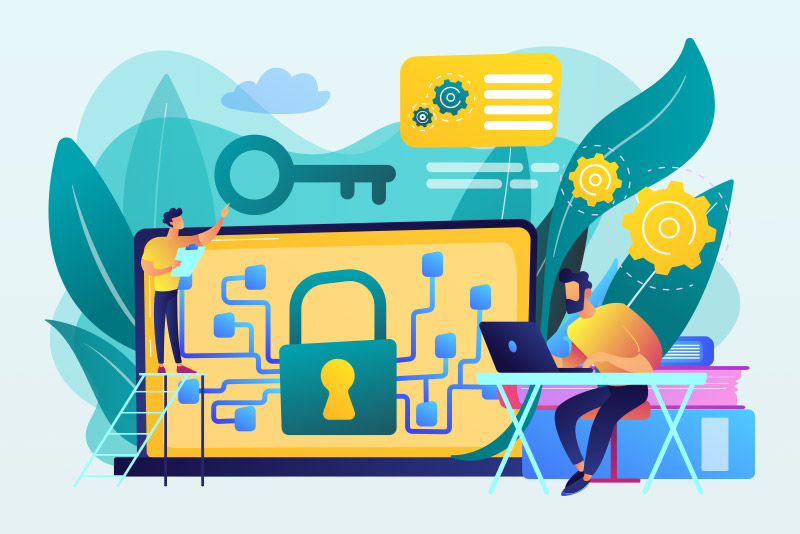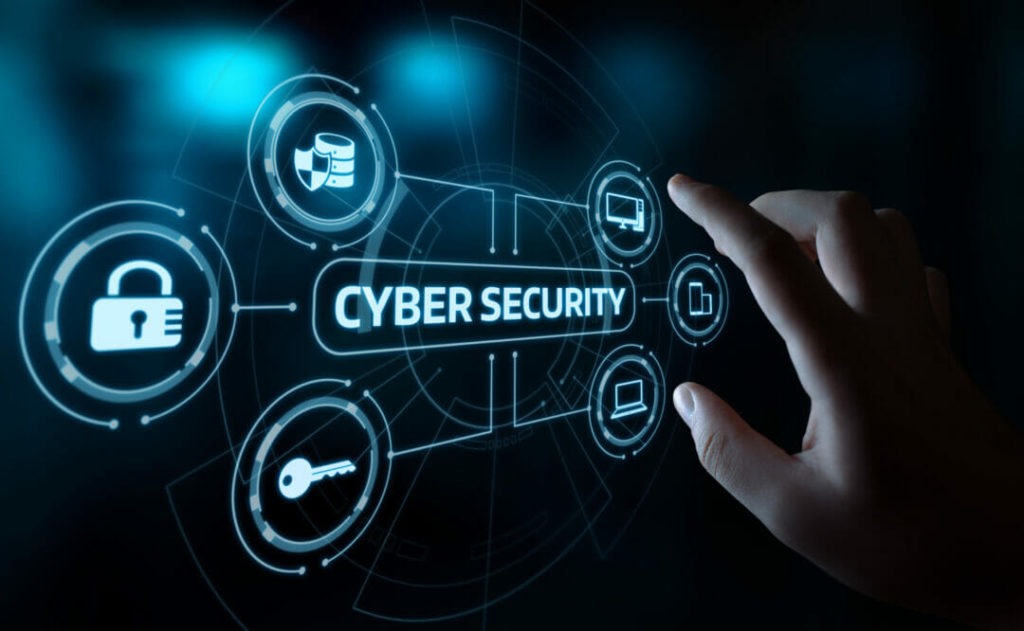Technology Decisions Without Bias
Technology is meant to enable growth — not limit it. Yet too often, we see organisations investing in tools and platforms not because they’re the right fit, but because they’ve always been there. Or because a vendor was convincing. Or because a bundled renewal felt like the easiest path forward.
This kind of decision-making might feel comfortable, but it limits progress. When vendor bias creeps into IT strategy — consciously or not — it leads to inflated costs, bloated systems, innovation loss and opportunities missed. Whether it’s favouring a known supplier, avoiding the complexity of switching, or leaning too heavily on incumbent advice, the outcome is the same: strategy is built around what’s available, not what’s optimal.
At Beyond Technology, we believe in something different. We offer technology-agnostic advice — meaning we don’t resell hardware or software, and we don’t work to vendor quotas. Instead, we help our clients make technology decisions that are genuinely aligned to business needs. That means supporting flexibility, enabling scale, and making sure every investment drives long-term value.
The result? Our clients gain clarity. They remove hidden vendor bias from their planning and instead focus on outcomes: better interoperability, improved operational efficiency, and smarter technology investments.
Key Takeaways
- Vendor bias can lead to overcommitment, underperformance, and wasted spend.
- Technology-agnostic strategy focuses on solutions, not brands — ensuring alignment with your business goals.
- Beyond Technology provides independent advice across hardware, software, and platforms, helping you build the right strategy without external commercial influence.
- A vendor-neutral approach creates flexibility, reduces risk, and drives long-term value and innovation from your tech stack.
- Regular review of your current technology environment can reveal untapped efficiency and future-focused opportunities.
Summary Table
| Challenge | BT’s Approach | Business Benefit |
| Over-reliance on incumbent vendors | Independent evaluation of solutions across the market | Greater value, flexibility, and reduced risk |
| Biased vendor advice shaping strategy | Technology-agnostic guidance focused on business needs | Strategic alignment and better ROI |
| Lack of visibility across alternatives | Support comparing platforms, licensing, and pricing models | Informed decisions and more scalable outcomes |
| Bundled systems limiting interoperability | Design of modular, adaptable solutions | Reduced lock-in and better integration pathways |
The Risk of Vendor Bias
For many organisations, vendor bias doesn’t come from malice — it comes from habit. It might be the software that’s “always worked fine,” the provider with a long-standing relationship, or the platform that integrates well enough to avoid friction.
But over time, these choices can quietly narrow your options and limit innovation. When your IT strategy is shaped by what’s already in place — or by the advice and preferences of a favoured vendor — your business is forced to operate within artificial limits. You start investing to maintain relationships, not solve problems.
Vendor bias often reveals itself in subtle ways:
- Projects scoped to fit a preferred provider’s capabilities, not your own requirements
- “Standard” hardware refresh cycles that don’t reflect actual business needs
- Recommendations from vendors that prioritise upsell over impact
- Requirements defined by existing capabilities not what’s possible
- Renewals pushed through without market testing or performance review
The danger lies in the long-term effects. Legacy systems become harder to untangle. Integration challenges mount. Licensing costs increase. Teams become locked into environments that no longer serve the business — but seem too difficult to escape.
At Beyond Technology, we regularly work with clients who feel stuck — not because they lack budget or intent, but because past vendor decisions and biased advice have intentionally boxed them in. Our role is to bring fresh perspective, assess the existing tech stack without bias, and help carve a path forward that puts business goals, not vendor relationships, at the centre.
What a Technology-Agnostic Strategy Looks Like
A technology-agnostic strategy doesn’t start with tools — it starts with business needs. At Beyond Technology, we help clients define what they’re trying to achieve before we ever recommend platform, product, or provider options.
This approach is grounded in objectivity. We assess your current tech environment, identify capability & performance gaps, and map each solution to your specific goals — whether it’s streamlining operations, reducing risk, improving customer experience, or enabling growth.
A technology-agnostic strategy typically includes:
- Platform neutrality: No preference for one vendor over another — we evaluate what’s best based on fit, not affiliation.
- Vendor comparison and market testing: We benchmark multiple options and engage with different providers to ensure competitive tension and transparency.
- Future-ready architecture: Solutions are chosen for scalability and adaptability, not short-term convenience.
- Interoperability by design: We prioritise systems that integrate well across your ecosystem, reducing silos and manual workarounds.
- Strategic alignment: Every technology decision is tested against its ability to support your business priorities — not just IT outcomes.
The result is a technology environment built for resilience and progress. It gives your organisation the confidence to move forward with decisions that are grounded in evidence — not influenced by vendor loyalty or past investments.
And importantly, it gives your internal teams and stakeholders the clarity that decisions are being made in the organisation’s best interests, not someone else’s sales targets.
Why Vendor-Neutrality Drives Better Results
When organisations rely on a single vendor or a narrow set of familiar providers, they often trade long-term outcomes for short-term convenience. While this can seem like the safe option, it comes with hidden risks — lock-in contracts, limited flexibility, and missed opportunities to innovate, optimise cost and performance.
At Beyond Technology, we take a vendor-neutral approach because we’ve seen how it consistently delivers better business outcomes.
Here’s why it works:
- Unbiased Evaluation: We pragmatically assess solutions purely on merit — their fit for your business, not their marketing. This means you’re not constrained by the limitations or incentives of any one vendor.
- Reduced Lock-In Risk: Technology changes fast. When you’re tied to a single provider, evolving your stack becomes harder — and more expensive. Vendor-neutrality protects your ability to adapt and pivot.
- Better Pricing and Terms: Comparing multiple vendors creates competitive tension, giving you stronger negotiating power and more favourable contracts.
- Improved Solution Fit: Every organisation is different. Vendor-neutrality allows us to match your business with the technology that’s actually the best fit — not just the one with the biggest brand or longest relationship.
- Future-Proofing: By choosing interoperable, open systems, you create a tech environment that’s scalable, flexible, and ready for what’s next — including emerging technologies or future business requirements.
In short, vendor-neutrality is not just about independence — it’s about performance. It ensures that your IT decisions are guided by business priorities, not influenced by sales targets or legacy arrangements. And that’s how you get technology that works harder for your business.
Beyond Technology’s Approach
At Beyond Technology, vendor-neutrality isn’t just a principle — it’s embedded in how we work.
We don’t sell hardware or software. We don’t take commissions or have partnerships that bias our recommendations. Instead, our role is simple: to help our clients make confident, informed technology decisions that serve their business objectives — not someone else’s.
Here’s what that looks like in practice:
- Independent Evaluation: We begin with a deep understanding of your current IT environment, business goals, and future plans. From there, we evaluate a broad range of potential solutions across vendors and platforms, using business needs — not brand loyalty — as the benchmark.
- Tailored Technology Strategy: Every organisation is different. We don’t recycle advice. We build a tailored technology strategy aligned with your operational needs, growth plans, and budget, factoring in interoperability, scalability, and long-term value. Change is deliberate and based around a pragmatic balanced assessment of cost, risk and benefits.
- Transparent Recommendations: Our clients value the clarity and logic behind our advice. We break down the rationale behind every recommendation — whether it’s consolidating platforms, adopting new tools, or negotiating better terms.
- Support Across the Lifecycle: From planning and selection through to the governance for implementation and optimisation, we stay by your side. Our vendor-neutral model means we’re not pushing any particular product — we’re focused solely on getting the outcome right.
It’s this independence that allows us to stay laser-focused on what matters most: your success. Whether you’re replacing legacy systems, integrating new platforms, or scaling operations for growth, our unbiased guidance ensures you make the smartest investment for your future.
Final Thoughts: Choose Confidence, Not Compromise
When it comes to IT decisions, the wrong influence can cost more than just money — it can stall innovation, impact performance, and lock your business into systems that no longer serve you. Unwinding a poor technology decision costs more than twice the time and budget than it took to implement.
That’s why vendor-neutral advice is so critical. It removes bias, sharpens focus, and puts your business needs at the centre of every decision. At Beyond Technology, we’re not tied to any one platform, provider, or product. Our only commitment is to helping you find the solution that actually fits — technically, operationally, and commercially.
Whether you’re planning a major technology investment, reviewing legacy systems, or looking to future-proof your IT environment, we’re here to guide you with clarity, independence, and experience.
If you’d like to see what that looks like in your business, let’s have a chat. We’ll help you move beyond vendor-driven decision-making — and towards a strategy built entirely around your success.
FAQs Answered:
1. What is a technology-agnostic approach in IT consulting?
A technology-agnostic approach in IT consulting refers to providing advice and recommendations without preference for any specific vendor or technology. This ensures that the advice is tailored to the client’s unique business needs, promoting flexibility and adaptability in technology choices.
2. Why is vendor-neutral IT advice important for businesses?
Vendor-neutral IT advice is crucial as it allows businesses to receive unbiased recommendations that focus solely on their objectives and requirements. This approach helps in avoiding vendor lock-in, ensuring that technology decisions are made in the best interest of the business rather than being influenced by vendor relationships.
3. How can businesses avoid vendor lock-in in their IT strategy?
To avoid vendor lock-in, businesses should:
- Adopt open standards and interoperable systems.
- Engage in thorough market research before selecting vendors.
- Ensure contracts have flexible terms and exit strategies.
- Seek advice from vendor-neutral consultants who prioritize the business’s needs over vendor affiliations.
4. What are the benefits of using a vendor-neutral IT consultant?
Engaging a vendor-neutral IT consultant offers several benefits:
- Access to a broader range of solutions tailored to business needs.
- Unbiased recommendations free from vendor influence.
- Enhanced negotiation power with multiple vendors.
- Pragmatic advice that considers the appropriate balance of cost, risk and capability.
- Reduced risk of being tied to a single vendor’s ecosystem.
5. How does a technology-agnostic strategy support long-term business growth?
A technology-agnostic strategy supports long-term growth by:
- Ensuring flexibility to adapt to emerging technologies.
- Aligning IT solutions with evolving business objectives.
- Reducing dependency on specific vendors, allowing for easier integration of new solutions.
- Promoting pragmatic cost-effective decision-making by evaluating a wide range of options.




























